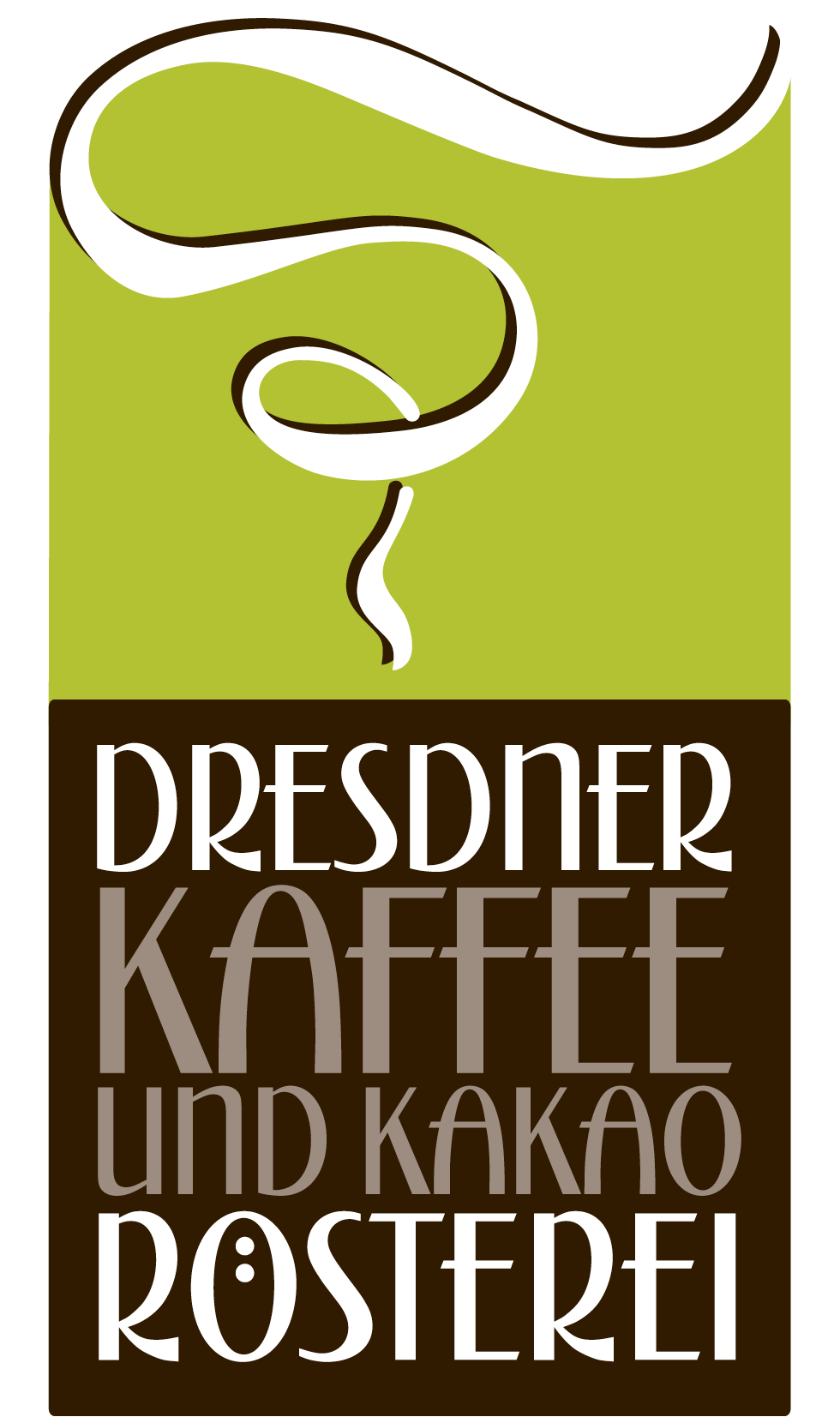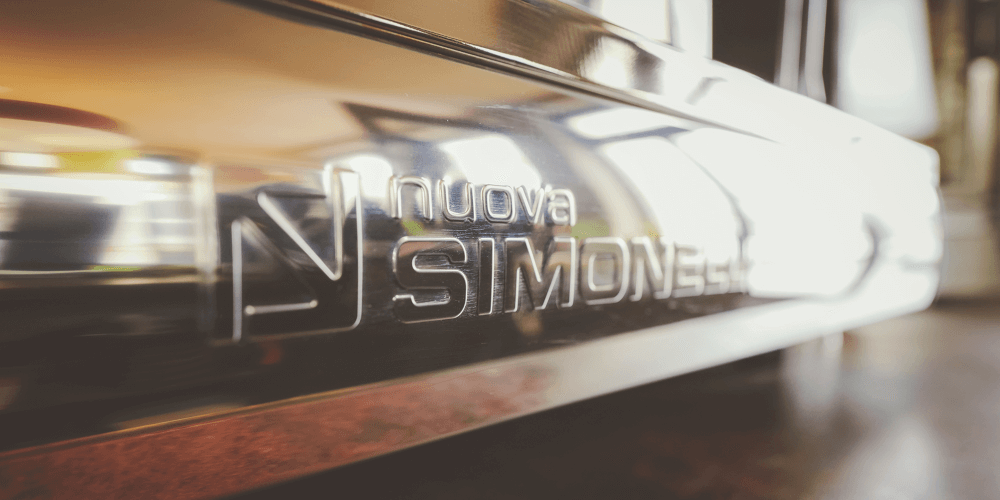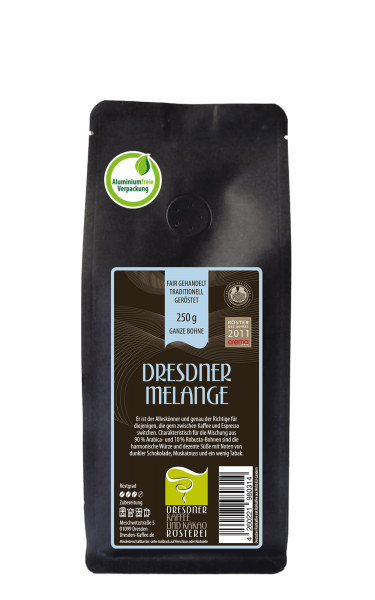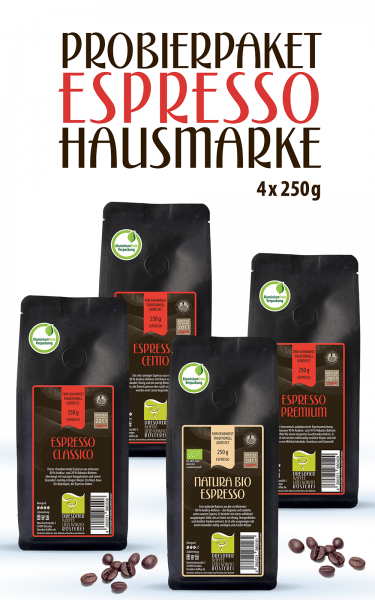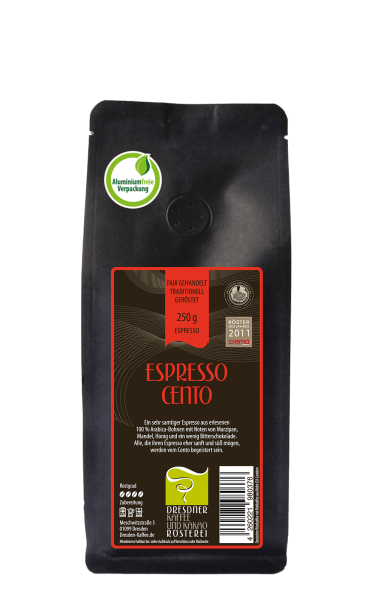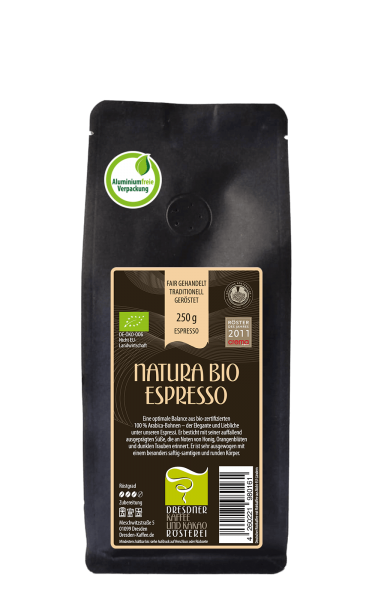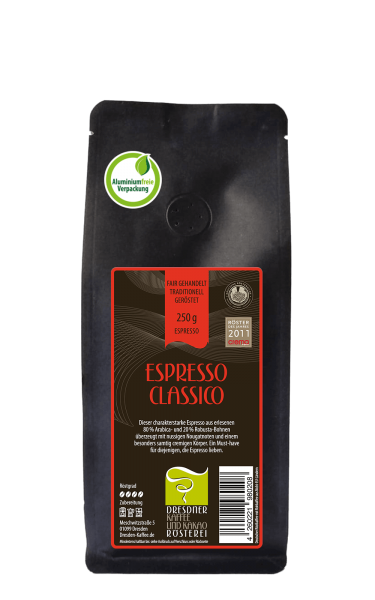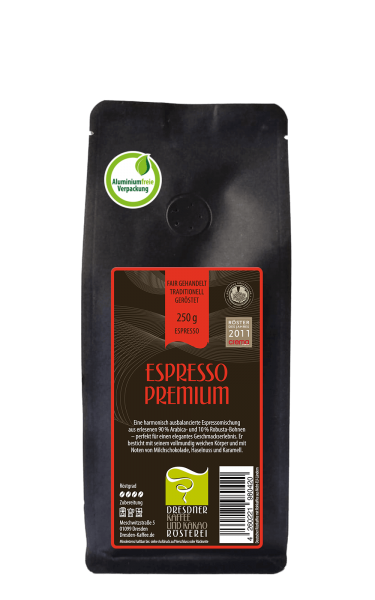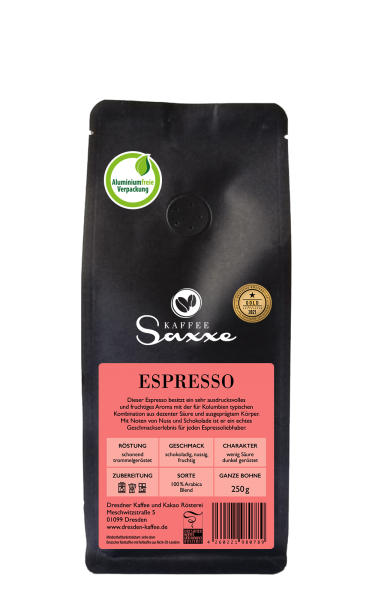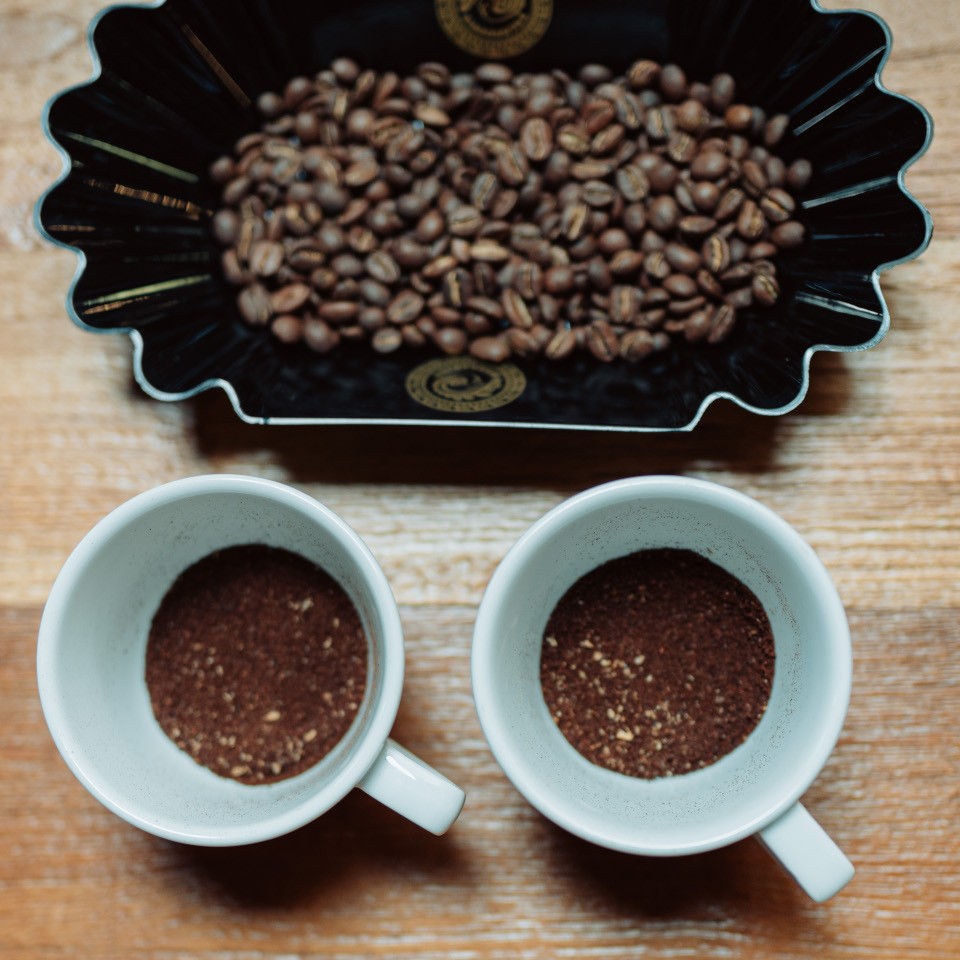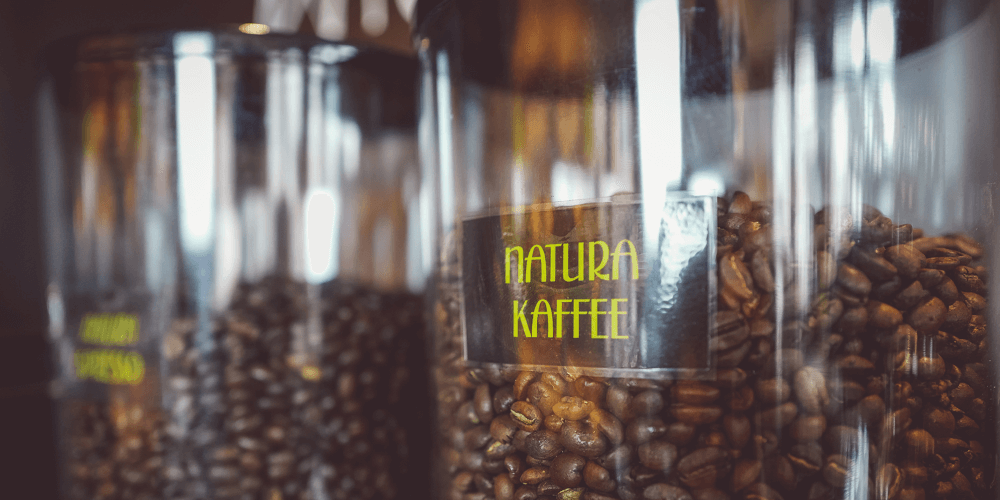Best coffee beans for fully automatic coffee machines
The best coffee beans for fully automatic coffee machines are usually the house brands of your favorite roasters. We always recommend buying whole coffee beans for your fully automatic coffee maker and not powdered coffee. Fully automatic coffee machines are true all-rounders when it comes to variety and speed of preparation of coffee creations. Especially in the morning, when things have to go quickly. They heat up quickly and are therefore ready for use. A simple press of a button is all it takes to fill the cup with your favorite coffee. But before that, the grind, temperature and amount of water must be coordinated. If all the settings are right, a fully automatic coffee maker can conjure up almost all common coffee specialties, especially espresso-based variants with milk.
Most fully automatic machines have only one bean hopper. The challenge then is to find a coffee that tastes good as both an espresso and a coffee. We recommend our Dresdner Melange bean here.
Of course, it doesn't have to be our coffee beans. However, it is important that you use traditionally roasted beans. Because, even if the coffee machine costs several thousand euros, the coffee will not satisfy you if the coffee beans are of poor quality.
What are the best coffee beans for automatic coffee machines?
"The best coffee beans come from small roasters with transparent and fair direct trade. Gentle drum roasting is just as important as a differentiated flavor profile. You can recognize the best coffee beans by the fact that the manufacturer provides full details on origin, preparation, roasting date and trade route." Quote, Arne Preuss, barista and coffee expert from https://www.coffeeness.de/
Tip: If your coffee machine has a container for ground coffee, you can also choose this variant in our store under "Ground for coffee machine".
How does a fully automatic coffee machine work?
The process of how an automatic coffee maker makes coffee is essentially the same for all devices. In font 1, water is drawn from the water tank into the flow heater and heated to the proper temperature. At the same time, a suitable amount of coffee beans is ground in the grinder doser and falls into the brewing chamber, also called the extraction chamber. The brewing chamber is then pushed by a motor in front of a pressure piston, so that the brewing chamber and pressure piston press the ground coffee together.
The desired amount of water is then forced through the coffee powder by a pump and flows out of the brewing unit through the coffee spout into a cup as finished coffee. At the end of the process, the brewing unit returns to its original position and a piston presses the coffee grounds into the pomace container.
coffee grounds into the grounds container, where they can then be disposed of.
The intensity of the coffee can also be regulated via the grind. A finer grind increases the contact time of the water and is therefore more intense than a coarser grind.
There are two types of grinder
When buying an automatic coffee maker, also pay attention to what type of grinder is installed. A basic distinction is made between two different types: the disc grinder and the cone grinder. Both grinders are either made of steel or ceramic. The ceramic grinder has a high wear resistance and is very quiet during grinding. However, it is significantly more expensive compared to the steel grinder. A steel grinder achieves just as good a grinding result as ceramic grinders. However, long-term use can lead to signs of wear. In addition, the grinding process is significantly louder.
Milk frothing nozzle or milk frothing system?
Finally, automatic coffee makers differ in the way they prepare the milk foam. Here, a distinction is made between a conventional milk foam nozzle (also called a "lance") and full-fledged milk foam systems. In conventional preparation with the lance, a container of milk must be rotated under the nozzle. The steam foams the milk in the container. However, it takes a little practice to achieve the right milk foam consistency. This is not necessary for machines with automatic milk frothing systems. Here, milk is simply poured into an integrated container and the system takes the correct amount itself, steams it up and pours it directly into the cup. The advantage is mostly the easier and faster handling of such a system and their cleaning. The disadvantage is that you can not determine the consistency of the milk foam itself.
Care of your automatic coffee maker
Even if the preparation of your coffee specialties with the fully automatic coffee machine works very easily, you still have to pay attention to some things. Due to their numerous functions, fully automatic coffee machines are more complex to maintain than conventional preparation methods. Regular care and maintenance ensure a consistently delicious coffee experience and long life of the equipment.
How do you clean a fully automatic coffee maker?
Most modern machines feature automatic cleaning with steam after each switch-on and switch-off. In addition, both the drip tray and the container for coffee residues must be cleaned and emptied regularly.
Once a week, the brew group should also be removed and cleaned under running warm water. Please do not use your dishwasher or conventional cleaning agents for this. Each manufacturer has its own tips for cleaning, which should be followed.
Once a month, the compartments for beans and ground coffee should also be cleaned. If possible, clean the milk frother after each use or at least once a day. Milk frothing systems usually clean themselves through the steam, but these should also be cleaned at least once a month.
Descaling
Modern automatic coffee machines have sensors that can measure the lime content in the pipes. Older models count the number of coffees made and then report to descale the machine, preferably according to the manufacturer's operating instructions. Most manufacturers offer "descaling tablets" for this purpose.
At regular intervals, the mechanical parts of the brew group should also be treated with so-called "brew group grease". This prevents wear of the parts and ensures a long service life. The grease should be tasteless, food-safe and heat-tolerant (above 90 degrees). Silicone greases usually fulfill these properties. The grease maintains the sealing rings, promotes the smooth movement of the individual parts and increases the density. Overall, it promotes a smooth brewing process and prevents squeaking and creaking during brewing. The best way to find out which parts should be greased is to consult the operating instructions.
In rare cases, it is also worth replacing the machine's seals. It is advisable to call in a specialist for this, as it is not so easy. Most manufacturers offer a maintenance service for this.
